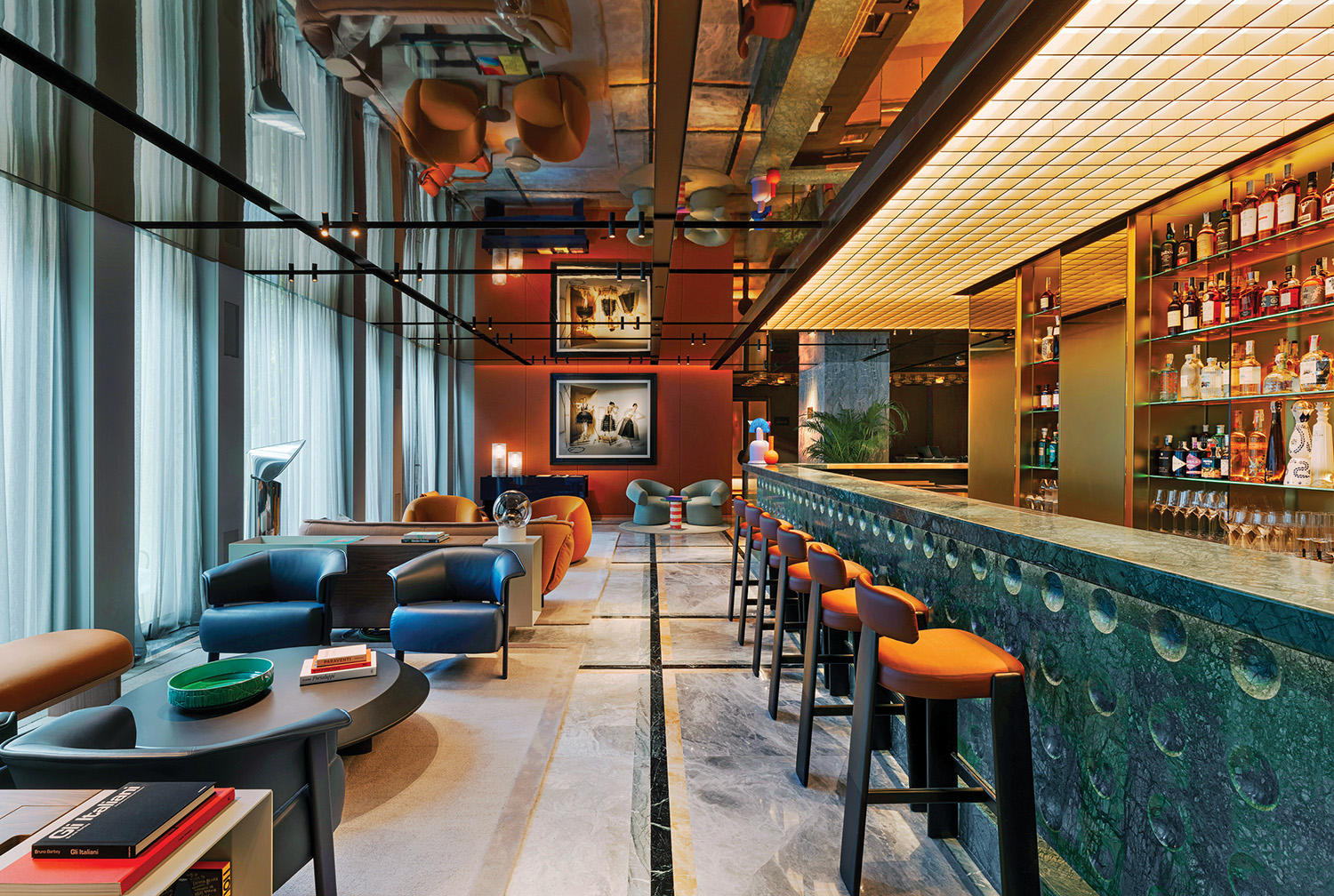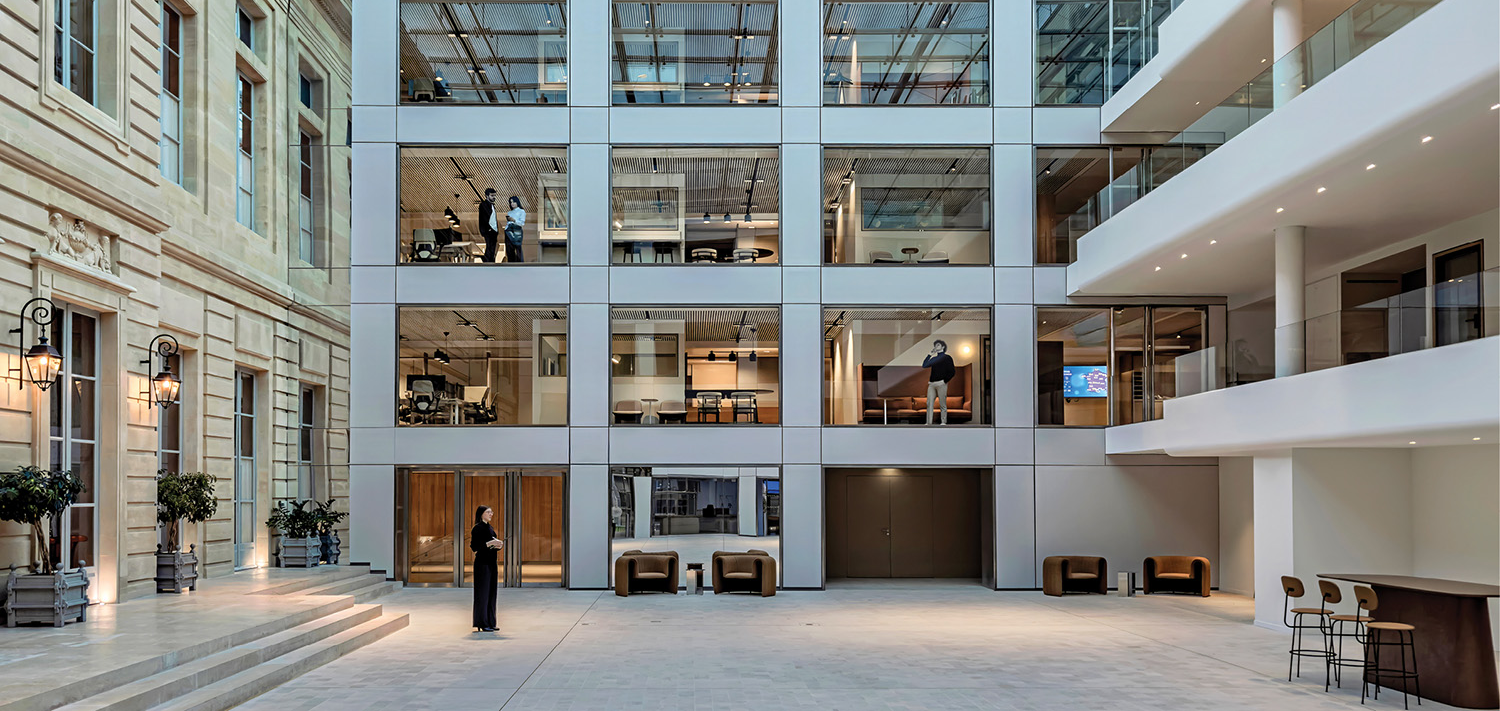Wyoming’s Jackson Hole Airport by Gensler Denver

The jagged peaks of the Grand Teton soar to more than 7,000 feet above the valley of Jackson Hole, Wyoming. How can a structure compete with a landscape so dramatic? As Gensler’s Denver office wisely realized, it can’t. So when the designers were tapped for a makeover of the airport within the Grand Teton National Park, they conceived of this gateway to the West as “a simple, understated foreground feature within awe-inspiring surroundings,” says Brent Mather, principal and design director on the project.
Constructed in 1950, the Jackson Hole Airport had already been enlarged twice before, and increasing tourism necessitated yet another expansion. But this one would also address problems created by the earlier interventions: a congested floor plan, cramped gate areas, abysmal wayfinding, and an absurdly small number of windows considering the spectacular setting. Gensler’s mandate was to expand the ticketing lobby and hold rooms, renovate the arrival and baggage-claim area, and add a baggage-screening building. But the park’s 18-foot height limitation meant the low profile of the airport would have to be maintained.
In adding mostly to the front of the building, the team nearly doubled the facility’s size, to 116,000 square feet. They dressed the new facade in materials reflecting the vernacular aesthetic: wood (seen on barns and sheds), weathered steel (evocative of the region’s old rusted-metal buildings), and heavily textured quartzite (mined in neighboring Idaho). Ash planks supported by massive Douglas fir columns compose the entry’s canted overhang. The building’s rear remained largely unchanged, with one exception, at the back of baggage claim: the team added a glass curtain wall edged with subdued black granite so the new expanse would not stand out from the extant sections.
The interiors, too, impart a regional flavor. Floors are smooth ground concrete, a humble alternative to traditional terrazzo. Opposite the windows in the baggage area, the hearth wall (so-called to evoke the mighty fireplaces in area lodges) is made of poured-in-place concrete that echoes—but doesn’t mimic—the quartzite exterior. “Stone on the inside would have felt clichéd,” explains Mather. “This is a more modern approach.” The ceiling’s clear-span queen-post truss system reduced beam depths, enabling the room to stretch as high as possible. Passengers now enjoy sight lines to check-in, security, baggage claim, and the rental car area. The glass wall serves to flood the ticketing hall with natural light.
That same wall opens up spectacular vistas, instantly orienting—and wowing—arriving passengers. In fact, many whip out their cameras and snap photos on the spot.
Project Team
Gensler: Adam Ambro; Jonas Philipsen; Scott Wightman; Randall Hatley; Amy Siegel. Landscape Consultant: Hershberger Design. Baggage System: Bnp Associates; Five Star Airport Alliance. Structural Engineer: Martin/Martin. MEP: Swanson Rink. Civil Engineer: Jacobs. Granite Installer: JDM Tile Contracting. Concrete Contractors: Advanced Concrete Construction; Rocky Mountain Concrete Specialists. Glasswork: Mountain Valley Glass; Guardian Industries. Metalwork: H.A. Fabricators; Sun & Sand Services. Woodwork: Western Woodwright. General Contractor: Wadman Corporation.


